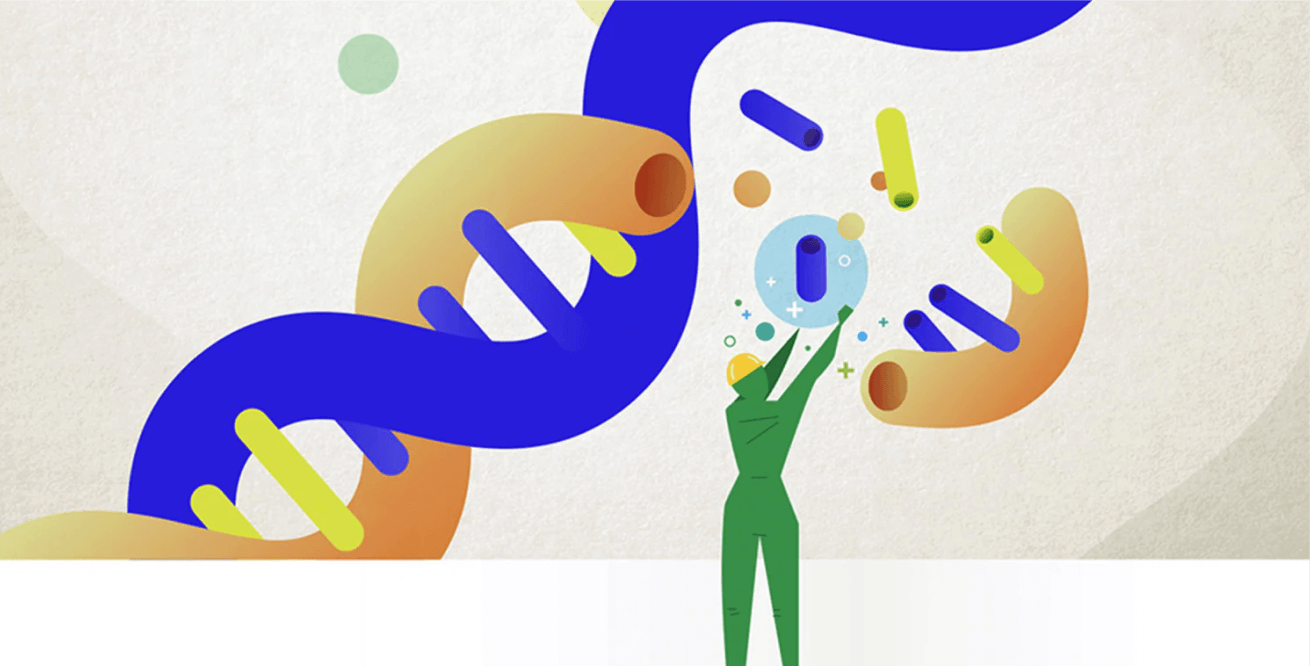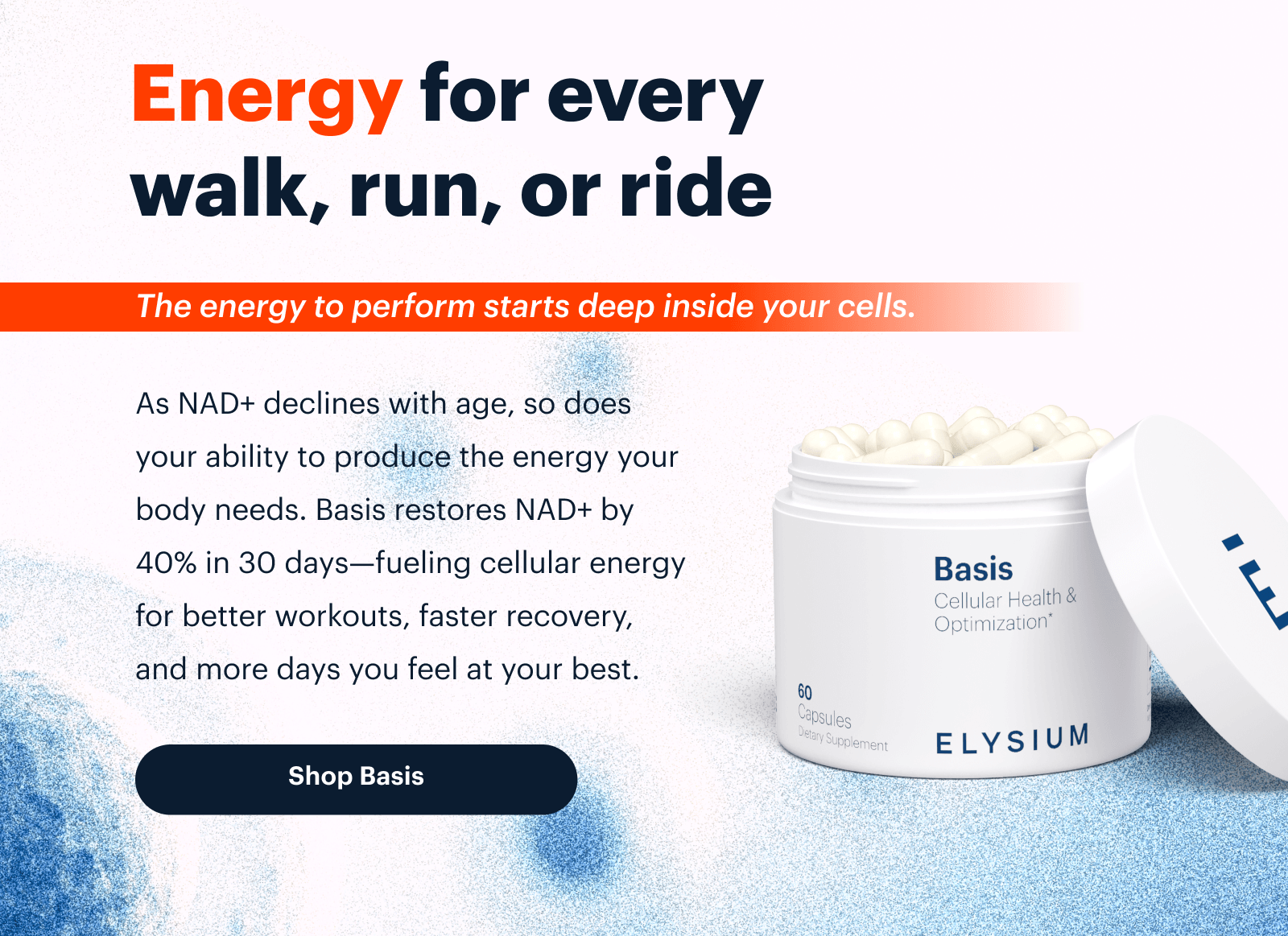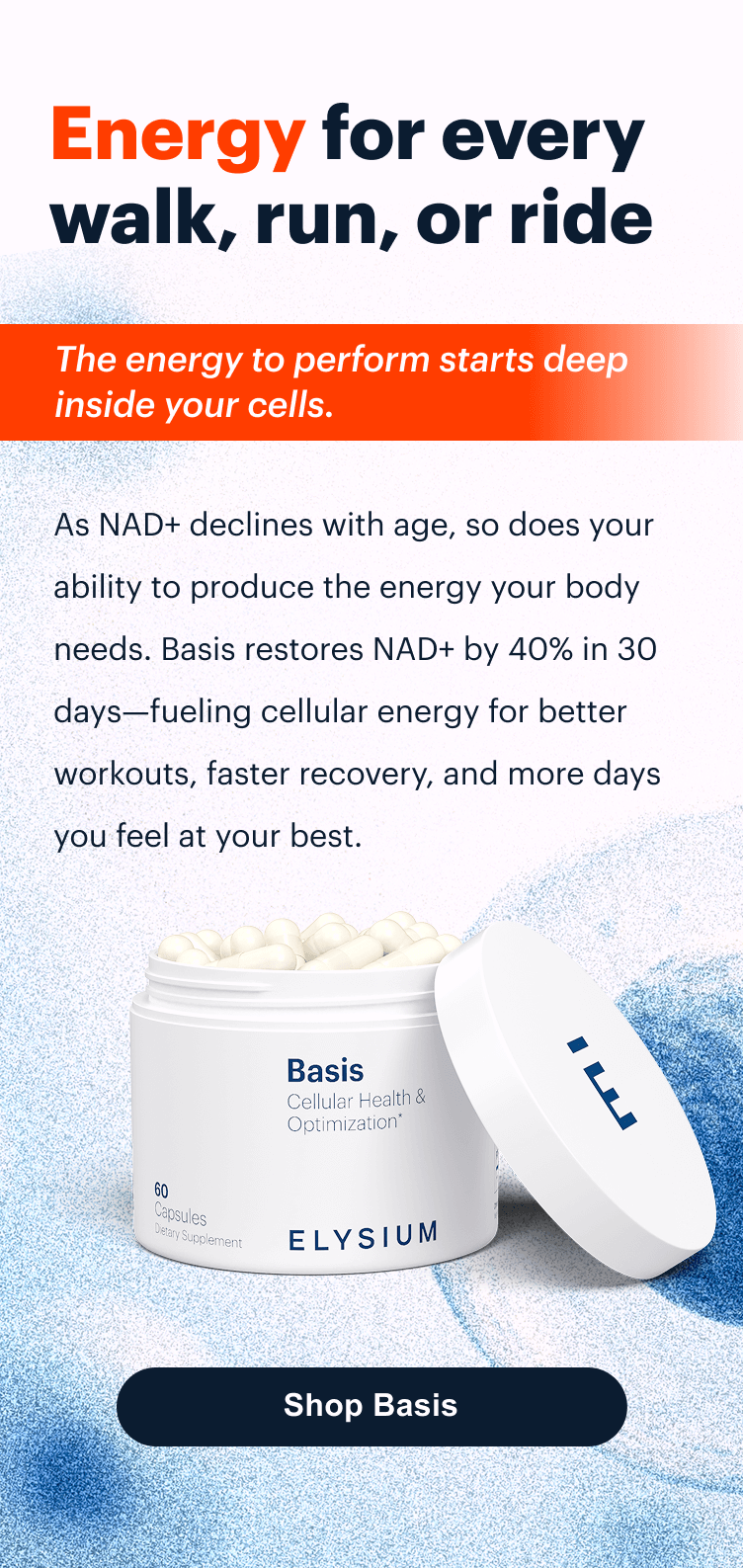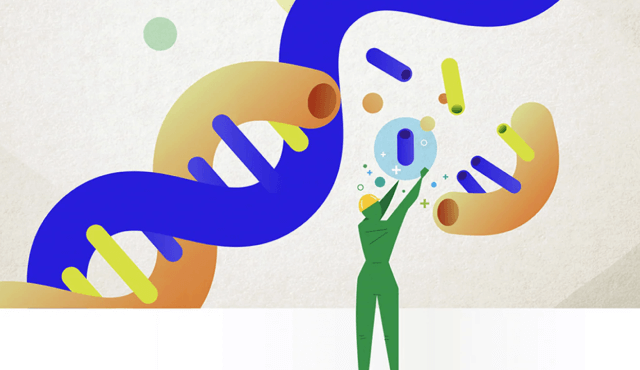|
|
|
|
Thanks for reading The Abstract. This month’s edition is
1,164 words, about a
4-minute read.
Is there a topic that you’d like to see more of in
The Abstract? Drop us a line at
abstract@elysiumhealth.com. Want to get
The Abstract in your inbox? Sign up here.
|
|
|
|
|
|
|
|
|
|
|
|
|
|
|
|
|
|
|
Welcome to the September edition of
The Abstract. In honor of Healthy Aging Month, we spotlight a study that helps us take the right steps (literally) toward longevity: The new research finds that walking just 7,000 steps each day cuts early death risk nearly in half. Our expert commentary comes from
Michael Fredericson, M.D., Director of PM&R Sports Medicine at Stanford and our newest Elysium Scientific Advisory Board member, who offers additional insights. Also this month: Vitamin D may slow cellular aging by preserving telomere length, Stanford scientists decode how carb responses reveal hidden metabolic risk, Finnish researchers may have discovered a new Blue Zone, and a key longevity gene (SIRT6) shows promise for vascular protection.
|
|
|
|
|
|
|
|
|
|
|
|
|
7,000 steps a day cuts death risk by 47%
|
|
|

|
|
|
|
A sweeping global meta-analysis published in
The Lancet Public Health finds that walking just 7,000 steps a day can reduce the risk of early death by 47% compared to walking 2,000 steps—nearly matching the benefits of the much-recommended 10,000-step goal. The review analyzed data from 57 studies across six continents and found improvements not only in longevity, but in cardiovascular disease, dementia, depression, and more. Even moving from 2,000 to 4,000 steps per day showed measurable health gains, suggesting that small increases in daily movement can lead to meaningful change.
|
|
Digging into the data, the study found a 38% lower risk of dementia and a 22% lower risk of depression at 7,000 steps/day compared to 2,000—a strong signal for brain health. While risk kept declining for some outcomes with more steps, the benefits tended to flatten around 7,000 steps/day for most, which supports this target as a realistic, evidence-based benchmark rather than an arbitrary goal.
|
|
|
|
|
|
|
|
|
|
|
The Expert's Take:
|
"This study firmly supports existing research, demonstrating that achieving 7,000 to 8,000 steps per day results in significant improvements in health outcomes. This goal is realistic for most individuals and offers substantial benefits. Moreover, studies have shown that the intensity of steps taken (cadence) provides additional health advantages beyond the total step count. It is also imperative to emphasize that while increasing walking is essential, reducing sitting time is equally critical for overall health."
|
|
|
Michael Fredericson, M.D.
Professor and Director of PM&R Sports Medicine in the Department of Orthopaedic Surgery at Stanford University, Founder of the Stanford Lifestyle Medicine Program, Co-Director of the Stanford Center on Longevity, and Elysium Scientific Advisory Board member
|
|
|
|
|
|
|
|
|
|
|
|
|
|
|
THIS MONTH
|
|
What We're Reading
|
|
These are third-party articles about science that we find interesting but have no relationship to Elysium or any of our products. Elysium’s products are not intended to screen, diagnose, treat, cure, or prevent any disease.
|
Vitamin D protects telomeres in largest trial to date
New results from the landmark VITAL trial show that daily supplementation with 2,000 IU of vitamin D3 can significantly slow telomere shortening—a key mechanism of cellular aging. Among over 1,000 older adults tracked for four years, those receiving vitamin D lost 140 fewer DNA base pairs on average than those on placebo, equivalent to about three years of aging. The randomized, double-blind, placebo-controlled study measured leukocyte telomere lengths at three time points and found a consistent protective trend in the vitamin D group. Researchers say the findings support a role for targeted vitamin D supplementation in countering biological aging and possibly reducing long-term risk of chronic disease.
(American Journal of Clinical Nutrition)
|
|
|
|
|
|
|
|
Blood sugar spikes may hold the key to aging well
A major new study from Stanford shows that not all carbs affect people the same way. In the trial, participants ate identical portions of foods like rice, potatoes, bread, pasta, and grapes while wearing blood sugar monitors. The results showed that people with hidden metabolic issues like insulin resistance or poor insulin production had bigger blood sugar spikes to specific foods—especially potatoes and pasta. Bread spikers were more likely to have high blood pressure. Grapes caused spikes in almost everyone. These patterns could help doctors spot early signs of prediabetes and tailor diets to each person’s unique metabolism. Stanford’s Michael Snyder, Ph.D., who co-led the study, offered a practical takeaway:
“Eating carbohydrates later in a meal is still a good idea even though it has not yet been sorted out whether it is best to eat protein, fat or fiber before carbohydrates. Eat your salad or hamburger before your French fries.” (Stanford Medicine)
|
Is Finland home to a new Blue Zone?
Researchers from Åbo Akademi University have identified Swedish-speaking Ostrobothnia (in Finland) as a potential new Blue Zone—a region where people live significantly longer, healthier lives. Residents there live longer (83.1 years vs. the national average of 81.6), enjoy better overall health, and embody many core Blue Zone principles: strong social ties, daily movement, and a plant-forward diet. The twist? Neighboring communities with similar habits but different cultural identities don’t show the same benefits—suggesting that culture itself may be a missing key to healthy aging. (Journal of Aging Research)
|
SIRT6 slows aneurysm progression by protecting mitochondria
A new study in the
Nature publication Acta Pharmacologica Sinica finds that SIRT6—a member of the NAD+-dependent
sirtuin family of genes—plays a protective role against thoracic aortic aneurysms, a condition that can lead to sudden death. Mice lacking SIRT6 in vascular smooth muscle cells developed more severe aneurysms and were more likely to die. The mechanism was the loss of SIRT6, which led to mitochondrial dysfunction and cell aging, while activating SIRT6 with a small molecule (MDL-811) reversed these effects and improved survival. The findings suggest a new therapeutic path for vascular aging and aneurysm prevention—and clinical studies are needed to determine whether the benefits will translate to humans.
(Acta Pharmacologica Sinica)
|
|
|
|
|
|

|
|
|
|
|
|
|
|
TERM OF THE MONTH
|
|
Biological age
|
|
/ˌbaɪ.əˈlɑː.dʒɪ.kəl eɪdʒ/
|
|
Biological age is a measure of how well your body is functioning relative to your chronological age (based on the year you were born). It reflects underlying cellular processes like inflammation, oxidative stress, and DNA damage—and can be influenced by lifestyle, environment, and other interventions. Unlike your chronological age, biological age is dynamic, and trackable through emerging technologies such as
Index.
|
|
|
|
|
|
|
|
|

|
|
|
|
|
|
AGING 101
|
|
What are sirtuins? A guide to sirtuins and their role in human health.
|

|
|
|
|
Sirtuins are a family of seven proteins that play an essential role in our health—from DNA maintenance to mitochondrial biogenesis and cellular energy production. They can only function in the presence of NAD+. As we age, NAD+ levels decline, diminishing the activity of sirtuins. Continue reading to understand the science of sirtuins with a focus on SIRT1 and SIRT3. (Read more)
|
|
|
|
|
|
|






